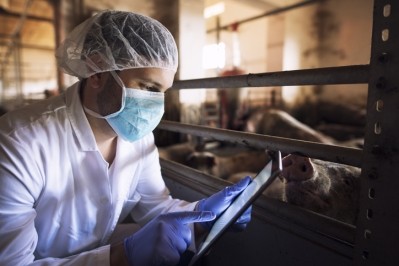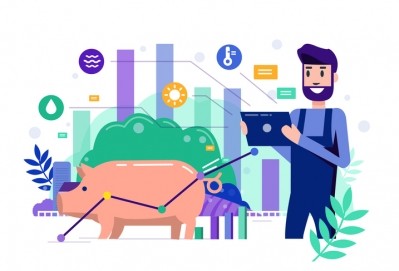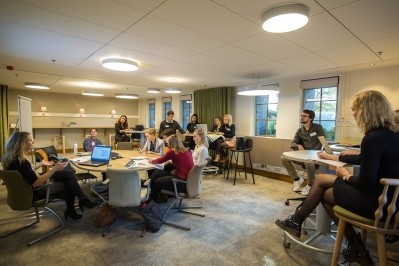Reports from VIV Europe 2018
Big data 'can optimize feed production processes, provide real insights for farmers'

Joost Sparla, marketing and technical director for poultry at Dutch feed group, ForFarmers, spoke about how digital technology has the potential to really transform feed manufacturing and, subsequently, on-farm poultry production.
Technology to be useful in this sector, essentially, should be about making information more readily understood, less obscure, so that stakeholders have concrete evidence about what is happening on a broiler or layer farm, he said.
“You don’t automatically see a solution if you have a single graph or a single table. You cannot draw a conclusion on that. You need to develop an algorithm to make the data more visible.”
ForFarmers says it wants to use big data to monitor and analyze the relationship between feed and nutrient intake and measured output - weight gain, FCR, egg mass - on a continuous basis to improve feeding programs.
Feed production parameters
The end goal is to connect feed production parameters with performance in the barns. Feed production processes can be optimized based on the outcome, he said.
“Feed production parameters can be, for example, the hardness or durability of a pellet, the amount of steam used, the amount of energy used [in the production process]. You could have a clearer view on how those parameters [physical form, quality] interact with performance on the farms if you have the data available and can connect them with each other.”
It is not always so obvious from measuring only pellet hardness or durability as to why pellet quality differs from one day’s production to the next, whereas analyzing parameters such as energy use and steam addition or the type of raw materials used can often better indicate the reasons for final feed pellet quality differentials, as the physical form of the pellet can differ depending on the amount of steam and energy used in the pelletizer, he told FeedNavigator.
If you make pellets too hard feed intake will drop at the farm, if the pellets are not hard enough, that will also alter their final physical form in the feed, they become powder like, and, again, on-farm bird production will be undermined, he said.
One other example of where big data may support feed milling is in raw material batch analysis, said Sparla. “One raw material load can differ from another in terms of protein, fat and starch content. There are also characteristics of raw materials that are not so obvious. If you can connect certain raw material batches to a certain feed on a certain farm and you see, for example, a dip in performance you can track that to the raw materials used, and take action from there.”
It is also important, he said, to be able to connect all the stakeholders in the poultry chain, from the hatchery up to the retailers, through the use of big data.
“In that way you can make improvements also. A simple example is in relation to laying hens, farmers receive the laying hens at 17 weeks of age. They know only the weight and the conditions of the birds. If you can connect the laying farm data with the rearing phase, you can explain a lot about the performance of the laying hens - how they were grown during the rearing phase, the feed they were given, the kind of housing systems involved. If you can connect that you can predict [with greater accuracy] the performance of the laying hen farm.”
But appropriate governance is required when collecting and sharing data with other parties in the poultry chain, he stressed.
Farming trends
In terms of market developments, European poultry farms are growing in scale, and number of barns on site, he said. The farmers are becoming more professional, they are increasingly relying on remote analysis of performance due to the size of their farms and the multiple houses. Consequently, the role of the feed consultant is changing; farmers are requesting more in depth advice from feed advisors, said the milling expert.
“We need to still be a partner for those type of farmers and we need to be able to add value."
He said it is now about ensuring farmers have the best information available to support them to take the most effective decisions.
"We want to ensure farmers have greater efficiency, healthier livestock and better returns. One way we are doing that is through products, of course, and we are also training our staff to be best in class. The third aspect is through performance but if you don’t measure performance on the farm you cannot improve it. In that way, to support the farmer in the optimal way, the collection of the data and the proper analysis of that data with follow up action [based on the findings] is critical.”
Transforming data into insights
There must be value for the farmer or they will not share their data. And while it is nice to collect data, unless you do something with it, carry out the proper analysis, it is worthless, he added.
“We have lots and lots of data in every feed mill. We have farm data but we have no connection between the two. Making that happen is our focus point for the next year. We have just started to analyze pellet quality in this context."
The farm data collation is done by Smart Farm Assistant from Porphyrio.
“The data collection on production and raw materials has been an ongoing process at ForFarmers. We started on-farm data collection with Porphyrio a year and half ago. While we did have, prior to that, a system to collect farm data - Agroscope - that only measures historical data, it is not a real-time information tool and there are no algorithms behind it to make predictions about the health of a flock. With the use of Smart Farm Assistant, which is backed by self-learning algorithms, you can act during a flock cycle. [With that tool] we can see on a daily basis how the flock is performing and our advisors may get an orange or red warning [signal] whereby they have to act, and contact the farmer to let them know something is going wrong in the barn.”














